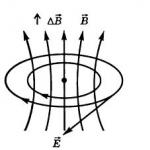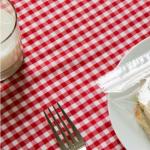Reduce the level of noise entering the room from the street and from next room, you can use sound insulation. Increasingly, not only entrance doors, but also interior doors with sound insulation are being installed in apartments and private houses. Sound insulation will help get rid of extraneous noise, which will have a positive effect on the level of comfort of the residents of the house. It is not necessary to replace every door in the apartment with a soundproof one; existing structures can simply be modernized.
A sound-absorbing interior door can have different designs, such designs may differ from each other in the opening method and material of manufacture, the same applies to dimensions. Features - the presence of seals both inside and around the perimeter of the entire product, which ensures a good fit to the box.
Despite the external similarity with conventional designs, internal filling sound-absorbing structures have their own characteristics. Soundproofing doors can be done using:
- corrugated cardboard is the most budget material, losing its properties in the first years of use;
- mineral wool - creates a non-flammable plane, but during operation due to the resulting voids it cannot fully retain noise;
- foam board- along with high sound insulation properties, it also has its disadvantages, for example, it is a highly flammable material that is dangerous due to the release of toxic gases;
- foamed polyurethane - retains noise and extraneous sounds, while meeting all requirements fire safety.

The sound absorption level of soundproofing doors is 27-40 dB, which is determined by the quality and quantity of the filler. Yes, thin and lightweight design is not able to get rid of external noise, so it is worth installing a door with more reliable protection.
Additional soundproofing methods
As effective ways Soundproofing improvements can be applied:
- glass insert;
- sticking to door frame sealing tape;
- installation of double-layer glass doors with air gap;
- the use of special brushes that retain noise.

Interior door designs with a high degree of sound insulation are presented in a large assortment and can perform a number of additional functions. For example, thresholds in doorways will help not only reduce the level of external noise, but also maintain heat inside the room. But they can interfere with smooth movement around the apartment. In this case alternative option there will be “hidden systems”. You can reduce the noise level by using:
- A rubber threshold that will close the gap under the canvas, making the opening and closing process much easier.
- The “smart threshold” system completely isolates the gap under quality doors when they are closed, but if opened, a mechanism is activated, causing the seal layer to rise by the desired height. Thanks to this design, drafts will be eliminated in the room.

If desired, you can do good sound insulation and on old doors, following the diagram below:
- The door frame must be in tight contact with the wall; sealant will be needed to seal the holes.
- We treat the soundproofing sheet on both sides with a special mixture.
- As decorative finishing For a soundproof door, leatherette is used, nailed onto small nails.
- To close the gap between the canvas and the box, a seal is glued.
- Installation of a flexible or “smart” threshold.
Design features for interior doors
As a basis for soundproofing door designs plastic, metal, glass and fiberboard boards. Wood and similar materials are suitable for swing doors, and plastic and metal - for sliding products. With the latest models it is impossible to fully protect the room from penetrating sounds.
Apartment doors with a frame covered in MDF and chipboard are offered of similar quality. This manufacturing technology is more typical for old-style designs, but now models are equipped with a cardboard insert filled in the form of honeycombs, which, due to their elasticity, retain extraneous noise.

High degree doors made from natural wood.
Decorative inserts made of glass and mirrors reduce the level of sound insulation, so optimal glazing is considered to be up to 20% of the total area canvases. To improve protection performance, it is better to install a double or triple design. Hard rocks wood can reduce noise penetration by about 20 dB. Even if the design does not contain sound-absorbing materials, wooden doors will be considered soundproof.
Achieving complete sound insulation is possible in the case of a minimum gap from the box to the canvas. An example would be structures that have a double ledge with a protruding groove and a layer of polymer seal.
Pros and cons
Sound retention is not the only purpose of soundproofing products; they are endowed with a number of related functions:
- Prevents corrosion of structures. Thanks to the insulating filling, interior doors are protected from the growth of mold and other pathogens.
- Strengthening the structure.
- Thermal insulation of the room. Almost all soundproofing fillers retain heat, closing cold bridges and preventing the formation of drafts.
Installing such a door will allow you to solve several problems at the same time.
How to choose
When selecting doors, it is important to pay attention to the following characteristics:
- material;
- structure door leaf;
- facing elements;
- thickness of the structure.
The most the best material wood is used to make silent interior doors. So, solid wood interior door leaf is capable of muffling external sounds by 10-15 dB. When using shields with an internal cavity, the opposite effect is possible - sound resonance will begin, which will lead to an increase in noise penetration into the room.
To solve this problem, it is advisable to use special filler materials. In a similar way, the sound insulation of plastic or metal structures, the purpose of which does not involve ensuring silence.

As an additional protective agent you can apply metal foil with soft lining. This sandwich reflects sound waves well and prevents them from penetrating inside.
If installation metal doors is prerequisite, then sound insulation is performed not only by the internal filler, but also external cladding for an aesthetic appearance of the product. Wood trim of any type looks attractive - solid wood, MDF, lining. Often craftsmen make upholstery made of artificial leather, which will look good against the background of the interior and will reduce the noise level.
Features of selection by opening method
The level of noise protection depends on the type of door structure. A plastic door is considered the worst soundproofing structure. Roller shutter doors with aluminum (wooden, plastic) slats do not cope with this task. Also, you should not rely on sliding ones; the accordion is not able to absorb sound.
How to make it yourself

Do high-quality sound insulation you can install an interior door yourself; to do this, it is sheathed with acoustic materials filled with filler so that there are no cracks or gaps. All the work is done simply, you just need to follow the suggested instructions:
- Upholstery material. You can use genuine leather, leatherette, vinyl and other similar products. Special boards with an adhesive layer are well suited, which makes them easy to stick to the canvas.
- Filling: batting, padding polyester, foam rubber. For fire safety purposes, experts recommend using mineral wool, which absorbs extraneous noise and does not support combustion.
- All cracks in the frame and walls are filled with sealant.
- Upholstery with a soft noise-absorbing pad is nailed to one or both parts of the canvas.
- Gluing the seal. The material should not get into the gap; it serves to close it. A minimum distance should be maintained from the canvas to the sealing tape - no more than 10 mm.
- Installation of a threshold or seal to the bottom of the doors.
Thus, soundproofing interior doors with your own hands will help get rid of extraneous sounds in the room. However, the doors will not be able to provide complete silence; for this it will be necessary to additionally work with the walls, ceiling, floor and windows.
Which interior doors to choose so as not to hear sounds from the next room? Do soundproof doors help? What can you do with old door to improve the soundproofing of the room. Let's talk about this in more detail.
The quality of sound absorption or sound insulation of doors is influenced by two factors:
- material of manufacture;
- type of construction.
The soundproof interior door has a special absorber inside the structure. It is important that there are no voids inside the canvas that have a resonating effect. In addition, it is equipped with special seals, which allows it to fit closely to the floor and door frame. It is due to this that the noise remains inside the room.
Door leaf materials
Today you can find soundproofing models made of various materials:
- plastic;
- natural solid wood;
Models made from natural wood are considered to be of the highest quality. They look massive and themselves prevent the spread of sounds. Doors made of plastic perform worst in this regard. The exception is doors with multi-chamber glass.

Also, you should not expect that doors made of MDF or chipboard will cope with the task. They will not be able to absorb sounds efficiently, so responsible manufacturers offer only solid wood panels as soundproofing materials.
Internal fillers are also of great importance. They are used as:
- foam;
- batting;
- mineral wool;
- corrugated cardboard;
- foam;
- foamed polyurethane.
A special protective film is also widely used as a protection element. Among the listed fillers, polyurethane foam is considered the safest. Mineral wool cakes over time; corrugated cardboard with honeycomb-shaped cells will also lose its basic properties after two to three years.
Polystyrene foam is a material that is dangerous to humans if it catches fire.
About seals
Anyone who has decided to purchase such a door needs to know that on the market you can find both a model with good sound insulation and one with excellent sound insulation. It is important to learn to distinguish between them.
Externally, such products are no different from ordinary ones. Noise absorption is carried out not only due to the fabric made in a special way, but also due to seals. It is important that the distance between the frame and the door leaf is minimal. Each side of the box is additionally equipped with a seal.

Don't forget about the threshold. When installing a soundproofing model, it is required. By the way, this element is not always convenient for household members. There are two ways to make the threshold optimal for use:
- the “smart threshold” system is a seal at the bottom of the door, which, when opened, rises without interfering with movement, and if the door is closed, it falls into place and prevents the passage of sounds;
- flexible threshold - a model made of rubber, which ensures a tight fit to the canvas and does not become a serious obstacle for a person to enter the room.
Sliding doors are difficult to make soundproof. Also bad qualities have doors made of laminated chipboard with glass inserts.
Rating of the best soundproof doors
We present you an overview modern models with sound insulation. The rating is based on numerous customer reviews on various forums. The rating scale is ten-point.
| Model | Manufacturer | Description | Price, rub | Rating |
| 33.23 series 3000CPL | Cabinetmaker, Russia | Massive, heavy door with a solid leaf and good sound insulation, surface - melamine; sound insulation - 26 dB | 13000 | 8 |
| Leonardo PF2 | Lanfranco, Italy | Available in walnut colour, made from solid wood with an antique effect veneer finish; sound insulation - 32 dB | 55000 | 9 |
| Palazzo 3 | Belwooddoors, Belarus | Made of solid pine, solid heavy door of the classic type; the manufacturer does not declare soundproofing qualities, but buyers note this quality | 17000 | 9 |
| 700sh | Cabinetmaker, Russia | Solid canvas finished with oak veneer; sound insulation - 22 dB | 11900 | 8 |
| № 7 | Doors of Belarus, Belarus | Made from solid pine and varnished, solid; sound insulation level - 26 dB | 6100 | 8 |
| Still 42-2 | Ostium, Belarus | The door structure is fireproof, reinforced, and has a stationary threshold; sound insulation level - 42 dB | 30000 | 10 |
| Louis PG | Doors of Belarus, Belarus | Made of heavy oak, varnished, style - classic; sound insulation level - 32 dB | 30000 | 9 |

33.23 series 3000CPL


Still 42-2

Doors of Belarus

Leonardo PF2

Louis-PG

Palazzo 3
Belarusian manufacturers have proven themselves well in the market. But what to do if the doors have already been purchased and installed, and the requirement for sound insulation appeared later? Let's talk about how to solve this problem yourself.
Do-it-yourself soundproofing of an interior door
There are simple techniques that will help isolate a room from extraneous sounds from the outside. Remember that if the walls of the room are made of plasterboard, the work will be in vain.
Before starting work, you should familiarize yourself with the features of soundproof doors:
- the canvas of this model is always thick;
- it has a multilayer structure;
- profile door frame filled with foam, as a result of which it retains sounds;
- A rubber threshold will create additional insulation.

There are quite a few options for correcting the situation. It all depends on the initial working conditions. Let's consider 3 options:
- If the door holds out external noise well, but this is not enough for you, you can cover the door with a special film and install a rubber threshold, which will slightly improve the situation.
- Seals are installed around the perimeter of the box, which will be effective when closed door. Today, seals from both domestic and foreign manufacturers are available on sale. The task is to isolate the door cracks.
- Upholster the door leaf on both sides with leather substitute. The good thing about this method is that efficiency is increased by using soundproofing pads. To do this, batting, mineral wool, and corrugated cardboard are placed under the layer of material. What is available.
Strengthening the canvas itself is not a complicated process; there are many ideas for sound insulation. But the effect will not be complete if gaps remain.
A modern apartment is always full of sounds and noises, which can be caused by busy traffic, traffic outside the window or loud music, work household appliances. The use of sound insulation and sound-absorbing wall coverings alone is not sufficient; to reduce the level of discomfort, it will be necessary to install sound-proof doors. Choose suitable model not as simple as in the case of selecting armored or insulated options. Assessing the soundproofing characteristics of doors is more difficult than measuring the thickness of metal or insulation, so you have to rely only on common sense and the recommendations of specialists.
Requirements for the design of a soundproof door
The most common misconception regarding the soundproofing characteristics of door leaves concerns the thickness and density of the material; it is believed that the most massive and heaviest door leaves have the best soundproofing qualities. This is only partly true, but high material density is not the only condition for good noise absorption.
It is important that soundproofing interior doors meet several additional criteria:
- The thickness of the canvas is at least 48-50 mm, thinner canvases made of pressed laminated cardboard, plastic or wood fibers do not have the necessary soundproofing qualities to reduce noise to a sound comfort level of 20-22 dB;
- The design of the door frame and soundproof door leaf must include rebates or a double rebate with an additional sound seal that prevents the propagation of sound waves through cracks and joints in the door frame;
- The lower edge of soundproof interior doors is always equipped with either a guillotine or brush seal. The size of the gap between the floor and the lower edge of the door leaf can reach 10-15 mm, and without a seal it is quite difficult to achieve high sound insulation characteristics;
- Use of additional soundproofing linings on door canopies and hinges. Metal conducts sound very well, so all metal fittings must be shielded.
For your information! When choosing soundproof doors, you need to pay attention to the noise insulation coefficient; the noise absorption standard is 30-35 dB.

The more materials with high density and elasticity, the worse the situation with blocking noise and sounds. For example, the most massive, with the thickest door leaf, front door made of metal does not have the best soundproofing characteristics.
Even laying a layer of mineral wool inside the frame can reduce the pressure of the sound wave by a maximum of 10-12 dB, that is, by half. The reason for the low soundproofing characteristics is that armored and steel doors have large number steel ribs and lintels, which, with any layer of mineral wool, will work as a kind of sound bridges, transmitting noise into the room.
Manufacturers are taking a more radical step - to produce soundproof entrance doors interior space The steel box was lined with a layer of foamed polyethylene. As a result, it is possible to improve the parameters of sound insulation protection by 12-15 dB, and when using a decorative overlay made of MDF, it is possible to achieve 17-20 dB, however, with an increase in the thickness of the doors by 3-4 cm.
One of the popular ways to make soundproof doors out of ordinary doors has been known for a long time. Regular steel door or made from solid oak, it is enough to sheathe thick fabric with foam lining. In addition to improving thermal insulation, it is possible to reduce the noise threshold and achieve sound insulation characteristics at the level of a double door block.
Door frame installation method
To a large extent soundproofing properties door block with frame and cladding depend on the method of fastening.
In a radical way to improve sound insulation performance possible by installing internal wooden door facing from dense laminate with filling from corrugated paper. You can use any interior door with a high level of noise and sound insulation resistance.
In theory, you can even install aluminum or plastic door the usual type, it doesn't matter. Characteristics inner fabric do not particularly affect the ability to withstand noise and sound.
In order for a double door to have high soundproofing characteristics, three conditions must be met:
- The size of the air gap in the vestibule between the doors must be at least twice the thickness of the outer door;
- Outdoor and interior door V mandatory equipped with a soundproof seal;
- The overall door frame must be installed using soundproofing materials.
Most manufacturers of entrance and interior doors complete door frames with a set of hangers and anchors. This approach simplifies the installation of the door frame, but often worsens the soundproofing characteristics of the door block.
In order for the soundproofing block to fully withstand noise, more modern scheme. Firstly, fastening a wooden or MDF frame to a doorway is done using silicone plugs and plastic dowels. Secondly, before foaming the cracks, a thin strip of foil isolon is placed in the gap between the box and the wall, and the tray itself is additionally hung around the perimeter on rubber or silicone cord. As a result, any vibrations and impact noise are absorbed at the entrance to the doorway.

Installation of soundproof doors
One of the disadvantages inherent in all types of soundproofing doors is the increased thickness of the wooden or cardboard panel. Majority standard models with increased sound insulation characteristics are manufactured according to a three-layer fabric scheme, photo.
To obtain high sound insulation characteristics, the door blank is made of three panels particle board low density. The outer surface is lined with MDF and covered with a wear-resistant laminate with imitation texture valuable species wood The box is made of chestnut or mahogany.
For your information! This fabric is called “FDB”, is produced in Belarus and, according to the manufacturer, is capable of providing very high sound insulation characteristics in the air at a level of 37 dB.
The only drawback is high price on soundproof door blocks. The cost of one product is more than 600 EUR. High noise insulation characteristics are achieved due to light cellulose fibers and an air gap. Is it true, high level sound insulation is achieved by significantly increasing the weight; the weight of the door leaf with a thickness of 43 mm reaches 40 kg.
Budget models of soundproof doors
Cheaper door blocks with improved soundproofing characteristics are manufactured according to the traditional scheme:
- The frame of the door leaf is made of pine timber;
- External cladding is made of MDF panels 8 mm thick;
- A honeycomb filler with a curved surface is installed inside the doors.

Honeycombs can be filled with polystyrene foam granules, cellulose and mineral fibers. As a result, a noise-insulating sheet at a cost of about 100 EUR provides a noise reduction of 22 dB.
Imported analogues made in Turkey and Poland use silicate glass granules and a gas-forming agent as backfill. Such door leaves, in addition to high sound insulation characteristics, have increased resistance to heat.

Information about the nature of the filler and noise insulation characteristics must be included in the quality certificate for the product.
Doors with special soundproofing characteristics
As interior doors with increased level insulation, you can use a conventional metal-plastic model with double-glazed windows. Despite the use of aluminum and plastic, materials with low noise insulation qualities, the canvas is made of double-glazed window can provide a noise reduction of 20 dB, and a three-chamber one by 22-25 dB.
The option of a metal-plastic interior door block is very convenient for rooms with high sound and temperature load. It could be doorway to the balcony, to open terrace or exit to the corridor.

For special occasions, when the noise level exceeds 50-60 dB, experts recommend ordering the manufacture of door leaf for doors according to individual project. Doors with high noise insulation are made with three or four layers of rolled sound insulation. For example, this could be a soundproofing mat based on pressed silicon fiber. The noise insulation level is 45 dB, resistance to front open flame up to 20 min. The material does not cake and does not lose characteristics over 20 years of operation.
Conclusion
One of the most effective ways to ensure high noise insulation performance is to install a hinged panel made of foam materials on the door leaf. Thin, just 5 mm, the material can improve the insulation of ordinary interior block by 40%. Porous rubber is finished with PVC film with the texture of wood, plastic or any other format, resulting in appearance the door block remains virtually unchanged, and the noise resistance increases.
One of the main functions of interior doors is to protect the room from the penetration of extraneous noise or, conversely, to reduce the noise emanating from the room. Therefore, each door can be considered soundproofing to a certain extent.
Types of soundproofing doors

If you need increased anti-noise properties, you will need special soundproofing ones, which many manufacturers offer to buy.
 Such canvases do not differ in appearance from standard ones, but are filled with noise-insulating materials inside.
Such canvases do not differ in appearance from standard ones, but are filled with noise-insulating materials inside.
For this purpose, pressed mineral wool, multilayer chipboard with tubular cavities, soundproofing film and other soundproofing materials.
Where are special soundproofing interior doors required?

For apartments and private houses, as a rule, ordinary veneered interior doors made of wood with a sealing contour on the frame are quite sufficient. You can buy such interior doors with natural or artificial veneer in the online store of the Porta Prima factory. They meet sound insulation standards and do not allow loud sounds into the room.
 Interior doors with enhanced soundproofing characteristics are usually installed in hotels, hospitals, educational institutions, recording studios and other organizations where a high level of acoustic sound insulation is required.
Interior doors with enhanced soundproofing characteristics are usually installed in hotels, hospitals, educational institutions, recording studios and other organizations where a high level of acoustic sound insulation is required.
How to soundproof a door to a room?

The question of how to soundproof an interior door worries many. It may be necessary to increase the level of sound insulation if you play at home musical instruments, like to listen to loud music or want to set up a recording studio at home. They protect the room from extraneous sounds worse than solid structures. Therefore, in the bedroom, children's room and other rooms where sound insulation is important, it is better to install doors without glazing. If you want to install a glazed sheet and achieve good sound insulation, choose models with triplex glass.
 For best protection from extraneous noise door block It is worth additionally equipping it with a seal and a threshold. Otherwise, extraneous sounds will penetrate into the room through the cracks around the perimeter of the canvas. Instead of a threshold, you can install a brush seal at the bottom end of the door.
For best protection from extraneous noise door block It is worth additionally equipping it with a seal and a threshold. Otherwise, extraneous sounds will penetrate into the room through the cracks around the perimeter of the canvas. Instead of a threshold, you can install a brush seal at the bottom end of the door.
It is important to remember that when deciding how to soundproof a door to a room, you must not forget about soundproofing the walls. This is especially necessary if the room does not have thick solid walls, but lightweight interior partitions.
If you need to reliably protect yourself from noise, you can improve the noise insulation characteristics of the door leaf using soundproofing materials for doors. The simplest, most inexpensive and effective way– upholster the canvas on one or both sides with leatherette or natural leather with a thick layer of batting or synthetic padding.
And if the thickness of the opening allows, then you can install a vestibule of two doors. Air gap will dampen sound waves and reduce noise levels.
Given the demand for doors with high-quality sound insulation, today domestic producers offer a whole range of solutions - these are paneled doors made of solid natural wood.
Doors with a polymer seal or special folds, the use of cellular cardboard as a filler for the voids of the door leaf, and for doors with PVC frame- the use of two- or three-chamber double-glazed windows, which excludes the free penetration of sound into a closed room.
Reviews of soundproof doors in the Revado store
Simchenko Anton Fedorovich:
We have a big house, there are always a lot of grandchildren. Children often make noise. But my wife and I want peace and quiet. We ordered soundproof interior doors from you. We didn’t even expect that our room would really become quiet. I also liked the design - calm and discreet, but at the same time original. I want to thank you. Now if we order more doors, it will only be from you.
Kletchenko Inna:
I have been looking for soundproof interior doors for my parents for almost a month. Dad rejected several options. And he only liked yours. He said that he couldn’t have done it better himself. I was even surprised when I heard such praise from his lips. Covering, locks, handles - we all liked everything. Delivery and installation also worked out very quickly. I’ll be doing my own repairs soon, I won’t even bother looking anywhere else. I will definitely order from you again.


















